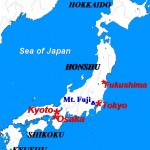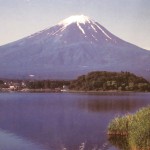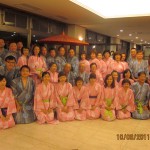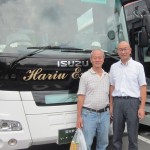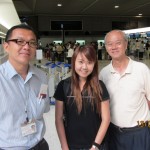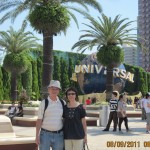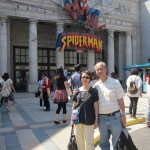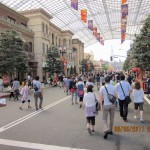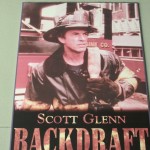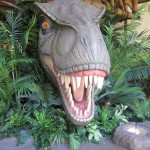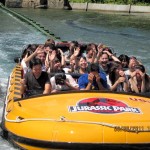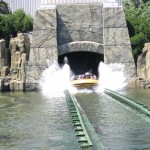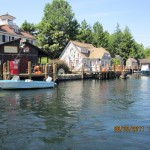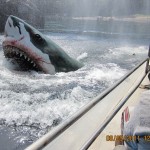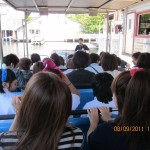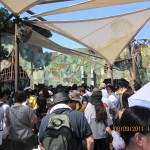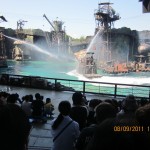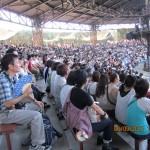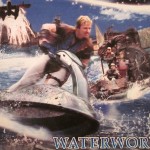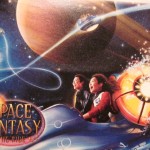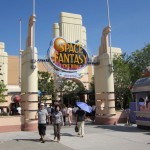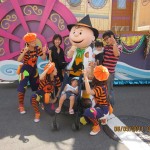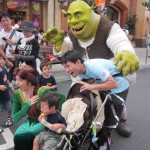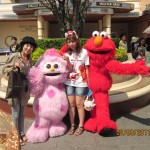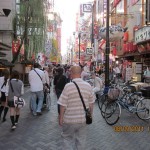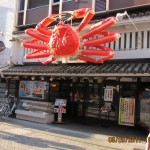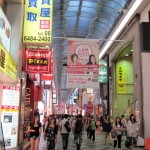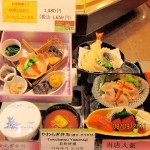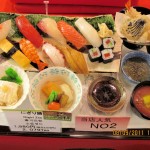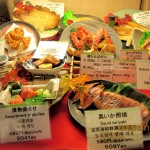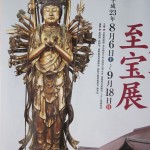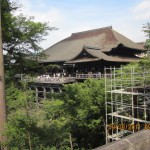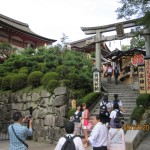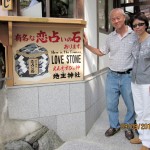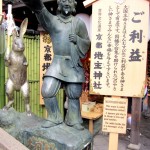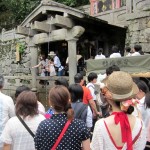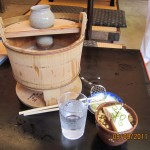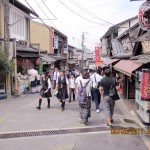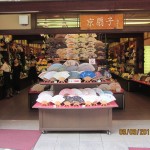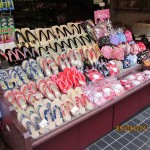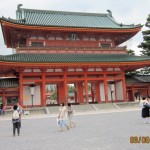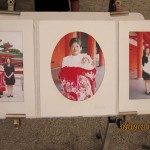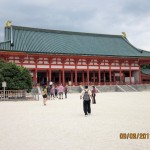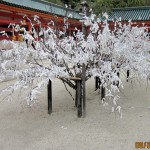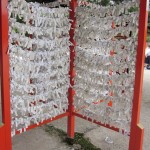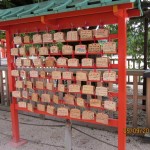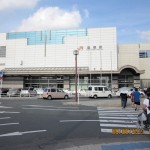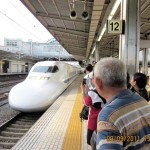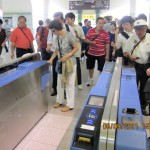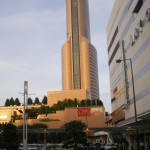Japan Travel I
Japan Travel I
Japan, located in East Asia, is an archipelago of over 6,500 islands. Among them, Honshu, Hokkaido, Kyushu and Shikoku are the large ones. 70% of the country is mountainous and the highest mountain is Mt. Fuji with a height of 3,776m in the west of Tokyo. It is a Japan’s landscape icon.
The nation has a large population of over 127 million and the longest life expectancy rate in the world. Its economy is the the 3rd. largest in the world after USA and China.
As Japan is located on the Pacific Ring of Fire, it has about 108 active volcanoes. So, volcanic eruptions and earthquakes occur often. The last 9 magnitude earthquake hit Japan on 11 March 2011 triggered a large tsunami that destroyed the whole city of Fukushima. Besides, it destroyed a nuclear plant in the city causing the city inhabitable for many years. It is that nuclear disaster that is affecting the nation’s economy, seriously.
Japan is fortunate to have many good sightseeing spots of splendid natural sceneries, landscapes, historical and cultural sites, and hot spring places. Some of these spots are on the list of the UNESCO World Heritage sites.
Day 1 Wednesday 7 September 2011
Departure for Japan
On 7th. September 2011, my wife and I joined 33 other Malaysians, tour leader(Tan San) and his assistant(Coey Lim) at the Kuala Lumpur International Airport to go to Central Honshu Island in Japan for a short vacation. At 11.45 p.m., we left the airport in a MAS(Malaysia Airline System) airplane and flew straight to Kansai International Airport in Osaka in Japan. After about 6½hours of non-stop flight, we landed safely at the airport on an artificial island that was opened in 1994.
Day 2 Thursday 8 September 2011
Arriving at the airport at 7.15 in the morning(Japan local time), we went through the immigration and custom check-points, smoothly. Outside the airport, we boarded a tour bus which was driven by Yoshikawa, a friendly, experienced and diligent Japanese. Universal Studios Japan in Osaka was the first place Yoshikawa brought us to.
Universal Studios Japan, Osaka
Opened in 2001, Universal Studios Japan is a place where there are over 20 shows and rides that are inspired by blockbuster movies, animations and comics. As it is a movie-theme park, it attracts lots of visitors of all ages , over 15 millions annually.
When we entered the theme-park in the morning, there were already many people there. As there were long queues for most of the shows and rides, our smart tour leader, Tan San, knew the shows and rides that we did not have to wait for long.
“The Amazing Adventures of Spiderman”
The first place he brought us to was “The Amazing Adventures of Spiderman” studio. In the studio, we sat in a vehicle which brought us to a “U.S.A. city”. In the “city” we watched Spiderman fighting against his villains. As our vehicle was moving alongside the hero, it careened and crashed through the streets, causing us shocked and making us scream. Besides, it scaled skyscrapers and plunged to the pavement in a simulated 400-foot freefall. On one occasion, Spiderman jumped onto our front vehicle and punched us, thinking that we were his villains. It was an amazing 3-D action-packed adventure that made us feel we were right in the middle of the action.
“Backdraft “
After that thrilling show, Tan San led us to another studio where we watched a fire-effect scene, like the one shown in the movie, “Backdraft”, a 1991 action-thriller film.
The highlight of the fire scene was in a mock warehouse in the studio. Standing on an observation platform overlooking the warehouse, we waited for an action to begin. First, we saw a few spots on fire followed by some loud explosions. Suddenly, the whole warehouse was burning with large shooting flames which we could feel their heat. Then the structures of the warehouse were collapsing one by one. When the fire, finally, burnt out, a sudden and final loud explosion with the largest flame was heard, giving us a final heart-pounding shock. The frequent loud explosions, large shooting flames and high heat in the scene made us nervous and terrified most of the time. Well, that was a fantastic fire-effect show I have ever seen.
“Jurassic Park”
Then we went for a boat-ride in the Jurassic Park. It was a very popular attraction. But we had to queue up for 40 minutes before we could get onto a boat. While cruising along a river through a jungle of Jurassic Park, we saw a few kinds of “live” dinosaurs of different sizes in their habitats. Later, we heard loud animal noises. The dinosaurs had broken out from the fortified jungle and we were in danger. When our boat had negotiated a bend, we were shocked to see a fierce T-rex waiting for us right in front. Its head kept lunging forward with its mouth of sharp teeth wide open. Before it could bite our heads off, we, suddenly, plunged down over 85 feet, escaping the creature in the nick of time. But the free fall caused us to scream for life. When the boat hit the water below, most of us who did not wear rain-coats got wet. That was another adrenaline-pumping experience that we will never forget.
“Jaws”
The next place we went to was “Amity Island”. A boat carried us through on the shark-infested waters of the island. Soon we encountered a very huge white shark called “Jaws” that was 32 feet long. It was chasing after our boat. When we thought we were safe in a dark boat-house, it made its presence felt by wrecking the things around us. The boat moved out of the house quickly, but the large monster followed us. Suddenly, its head appeared out of the water close to our boat showing its menacing teeth. It gave us a fright. When it reappeared, it had a live thick electric cable in its mouth. The moment it disappeared into the water, we heard a loud explosion. A minute late, we saw the shark floating in the water. It was dead as the cable had electrocuted it. It was a great relief to all of us and we were glad to be back on the island. That was another scary experience, too.
“Waterworld”
As soon as we left the “Amity Island”, we went to another place to watch a show of some war actions, like the ones in a 1995 movie known as ”Waterworld”. The show was spectacular as it included death-defying stunts on water, land and overhead. Loud explosions, noisy pyrotechnics, large flame effects and splashes of water from jet-skis that got the front rows of spectators wet made the show exciting, funny, awesome and enjoyable.
“Space Fantasy”
After that “Waterworld’ action-packed show, we felt we had enough time for one more adventure. Looking around, we felt we should try the “Space Fantasy” adventure. In the adventure, we were supposed to travel in a vehicle, pass some planets and reach the fading sun to restore its energy. When we sat on a vehicle we knew it was going to be a rough roller-coaster ride. In the ride, we were, violently, thrown from side to side, up and down. We had to grasp the lap-bars for dear life when the vehicle spun round four times. After that terrifying ride, we were in a daze and state of shock. I vowed that I would not go for that ride again for my heart’s sake.
Animated Cartoon Characters
After having a lot of fun, excitement and shock in those experiences at Universal Studios Japan, it was time to leave the theme park for dinner. But before we left the theme-park, we came across some interesting and familiar animated cartoon characters like Charlie Brown, Woody Woodpecker, Elmo, Shrek and his wife. They were very friendly and happily invited visitors to take photos with them.
Shinsaibashi Area
In the evening, we arrived in Shinsaibashi Area which is well-known for shopping, entertainment and food in Osaka. We had our dinner in a restaurant there.
After dinner, we went window-shopping in some streets in the area. The most popular shopping street here is Shinsaibashi-suji which attracts lots of local and foreign visitors. Along this street covered with a canopy, many department stores are selling goods of local and world-class brands. There are also shops selling inexpensive goods ranging from clothes, handbags and shoes to watches, handphones and computers.
Restaurants
Concerning food in the Shinsaibashi area, a diner is spoilt for choice. There is a popular saying, “Dress(in kimono) till you drop in Kyoto, eat till you drop in Osaka”. There are many restaurants in this area selling all kinds of food, such as Japanese, Korean, Chinese and other Asian foods. Besides, some sell western foods. The popular Japanese foods are traditional oshi zushi(pressed sushi),, udon(a noodle dish), okonomiyaki(pan-fried batter cake) and takoyaki(octopus dumplings) to name a few.
We noticed that some restaurant-owners in the area hung large plastic models of animals on the front of their shops to attract customers, like crabs, octopuses and cows. Besides, many display plastic foods that look so real in glass-cupboards, glass-windows or outside their restaurants, hoping to lure hungry customers inside.
Ramada Hotel, Osaka
Having spent about two hours touring the interesting but busy Shinsaibashi Area, we left the place and went to a hotel known as Ramada Hotel in Kitaku, Osaka, to have a good night rest.
Day 3 Friday 9 September 2011
Kiyomizu Temple
At 8 in the morning, we travelled to Kyoto to visit a famous old wooden temple, Kiyomizu Temple. Located in a quiet tranquil lush-green environment of cherry and maple trees and perched on a slope of Otowa Hill, it was declared a Unesco World Heritage Cultural site in 1994. Founded by a great priest, Enchin, in 778 A.D. it houses Bodhisattva Kannon, a Buddhist God of Mercy with many arms and faces. This god has been worshipped by Japanese people of all classes since the temple was established.
Cherry and Maple Trees
In summer, the cherry trees and maple trees are covered with thick green leaves. But many visitors and worshippers will come in spring to see the beautiful cherry blossoms, and in autumn to see the multi-coloured maple leaves. Japanese school-children from near and far in Japan come in groups to visit the temple to learn about its history, traditions and cultures.
Jishu Shrine
Located behind Kiyomizu Temple, a shrine known as Jishu Shrine is dedicated to five gods, including Okuninushu-no-mikoto and his parents, Susanoo-no,mikoto and Kushinadahime. Young Japanerse like to worship Okuninushu-no-mikoto as he is in charge of love and match-making. At the shrine there are two stones which are about 10 feet apart, and they are known as “Love Stones”. According to the message on a notice-board, if a person can walk straight with eyes closed from one stone to the other, his love wishes will be granted by the Love God, Okuninushu-no-mikoto.
Otowa Waterfall
After the ancient temple tour, we went downhill and came across a waterfall, Otowa Waterfall, which is below Kiyomizu Temple. The local people believe that if a person drinks its water, he will be in good health, peace and harmony. Besides, all his undertakings will be successful.
Ah Po’s Tofu
Then we had a snack at a small tea-house near the waterfall. It belonged to a pretty old lady, Ah Po. She served us some soft, white, cold “tofu” or beancurd which was smooth and nice to eat.
Souvenir Street
On the way down a narrow crowded souvenir street to our bus, we browsed some shops built in Japanese traditional architecture. They were selling souvenirs, food, drinks, ice-creams, traditional clothes, etc. As the weather was quite hot then, I stopped at a shop to have a small bottle of cold soft drink and ice-cream.
Heian Shrine
Soon, we were on our way to another temple in the Okazaki Area in Kyoto City. The temple is known as Heian Shrine. It was established in 1895 to commemorate 1,100 years since Emperor Kanmu(737-806) moved the old Japan’s capital, Nagaoka-kyo, to Heian-kyo(now known as Kyoto). Two emperors, one the founder, Emperor Kanmu, and the other, the last emperor of the Heian Capital, Emperor Komen(1831-1866), were deified at the shrine. (In 1868, the second year of Emperor Meiji’s reign, the capital was moved to Tokyo.)
Shinto Events
Heian Shrine’s consists of three buildings: front, inner and main, collectively known as Daigokuden(Great Hall of State). Visitors are allowed to enter the front building only to worship, but they can enter the inner and not the main buildings on the days of Shinto events like Shichigosan and Omiyamairi.
Schichigosan is a festival for children, especially 3 and 7 year-old girls, and 3 and 5 year-old boys. These young children dressed in Japanese traditional costumes go to the shrine anytime in the month of November to receive the deities’ blessings. Omiyamairi is another festival but for babies who make their first visit to the shrine to receive the blessings, too. Only the priests of the shrine can enter the main building where the souls of the two emperors, Kanmu and Konmei, were enshrined. Some exhibits of photos showing proud parents with their children can be seen at the shrine.
While walking about in the temple courtyard, I came across small white folded papers tied to low leafless trees and wires in wooden props. They were tied there by visitors who had written their wishes in them. They hoped that their wishes would be granted by the deities. There was another prop with small wooden plaques hanging on it. They too carried writings of visitors’ wishes.
Bullet Train Ride
After a tour of Heian Shrine, we were off again. This time we travelled for about three hours to Toyohashi Station where we took a bullet train to Hamamatsu. That train was running on a Tokaido Shinkansen line from Osaka in the south to Tokyo in the north, a distance of about 515 km. Its maximum speed is 270 km/h . Japanese trains are well-known for punctuality.
While we were sitting comfortably on the train, we could see houses, farms and villages outside passing by fast. About 15 minutes later, the train arrived at Hamamatsu Station. As the distance between Toyohashi and Hamamatsu was 35 km, the train was travelling at an average speed of 140 km/h.
Okura Hotel, Hamamatsu
From the Hamamatsu Station, we walked a short distance to a hotel, Okura Hotel, in the highest building in the city, Act City Tower. The tall building looks like a harmonica, reminding visitors that the city is sometimes known as the “City of Music”. It houses shops, a food-court, Okura Hotel and an observatory on the 45th floor. We stayed at the hotel for a night.

